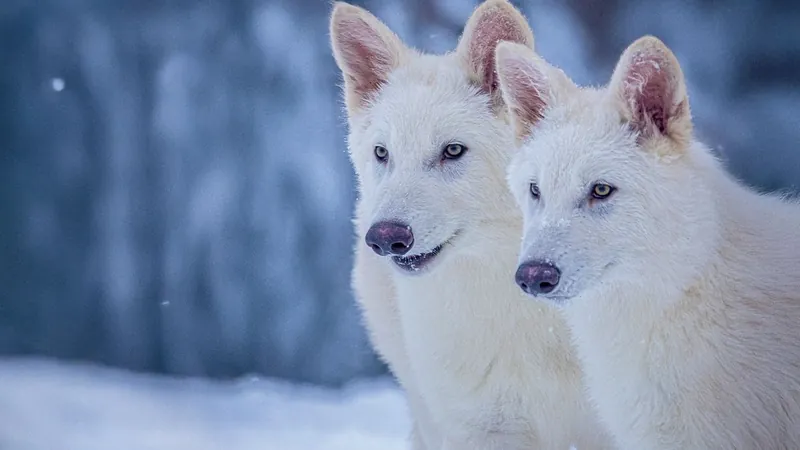
The Groundbreaking Return of Dire Wolves: A Milestone in De-extinction!
2025-04-07
Author: Mei
Introduction
In an extraordinary scientific breakthrough, dire wolves, the iconic predators that disappeared from our planet around 12,500 years ago, are making a comeback thanks to cutting-edge genetic engineering techniques. Researchers at Colossal Biosciences, a pioneering biotech company focused on conservation and de-extinction efforts, are heralding this achievement as the "world's first successful de-extinction."
The Birth of Dire Wolf Pups
Colossal's innovative team has successfully welcomed three adorable dire wolf pups into the world—named Romulus, Remus, and Khaleesi—reawakening a species that many have only known through the lens of popular culture, such as HBO's "Game of Thrones," where a dire wolf named Ghost captured the hearts of millions.
Genetic Engineering Process
The process of reviving these majestic canines involved complex genetic manipulation. The scientists meticulously reconstructed the dire wolf genome from ancient DNA samples, including a 13,000-year-old tooth and a 72,000-year-old skull. By comparing this genetic material with that of living relatives like gray wolves (Canis lupus), the team pinpointed specific gene variations unique to dire wolves that contributed to their size, coat color, and distinguishing characteristics such as their famous howl.
Gene Editing with CRISPR
Following the genomic analysis, the researchers leveraged CRISPR gene-editing technology to create what they refer to as "dire wolf cells" by editing the DNA of modern gray wolves. This involved adapting 20 different genes that encompassed the fundamental traits of the dire wolf. The edited cells were then placed into denucleated gray wolf egg cells, which were subsequently transferred into surrogate dogs—domestic animals closely related to gray wolves.
The Journey to Birth
The journey toward bringing these puppies to life involved immense precision and care. After several attempts, only three embryos successfully implanted in the surrogates. Following a 65-day gestation period, the pups were born through cesarean section on October 1, 2024. Videos released by Colossal showcase the pups as they explore their surroundings, test out their howls, and display the playful demeanor characteristic of their ancient ancestors.
Historical Context of De-extinction
It is important to note that while this represents a remarkable achievement in de-extinction, it's not the first of its kind. In 2003, scientists in Spain cloned a Pyrenean ibex, known as a bucardo; however, the cloned animal faced immediate complications and died shortly after birth.
Conservation Efforts
Colossal Biosciences is also making headlines for its conservation endeavors by announcing the birth of litters of cloned red wolves, one of the world's most critically endangered species. With these advancements, the company aims to not only resurrect extinct species but also to bolster the dwindling populations of endangered ones, highlighting the potential of biotechnology in wildlife conservation.
Ethical Considerations
The successful birth of these dire wolves raises exciting questions and ethical considerations regarding the future of extinct species. What else might we bring back from the past? And at what cost? As scientists march into the realm of de-extinction, many await the answers, eager for the next chapters in conservation history.



 Brasil (PT)
Brasil (PT)
 Canada (EN)
Canada (EN)
 Chile (ES)
Chile (ES)
 Česko (CS)
Česko (CS)
 대한민국 (KO)
대한민국 (KO)
 España (ES)
España (ES)
 France (FR)
France (FR)
 Hong Kong (EN)
Hong Kong (EN)
 Italia (IT)
Italia (IT)
 日本 (JA)
日本 (JA)
 Magyarország (HU)
Magyarország (HU)
 Norge (NO)
Norge (NO)
 Polska (PL)
Polska (PL)
 Schweiz (DE)
Schweiz (DE)
 Singapore (EN)
Singapore (EN)
 Sverige (SV)
Sverige (SV)
 Suomi (FI)
Suomi (FI)
 Türkiye (TR)
Türkiye (TR)
 الإمارات العربية المتحدة (AR)
الإمارات العربية المتحدة (AR)